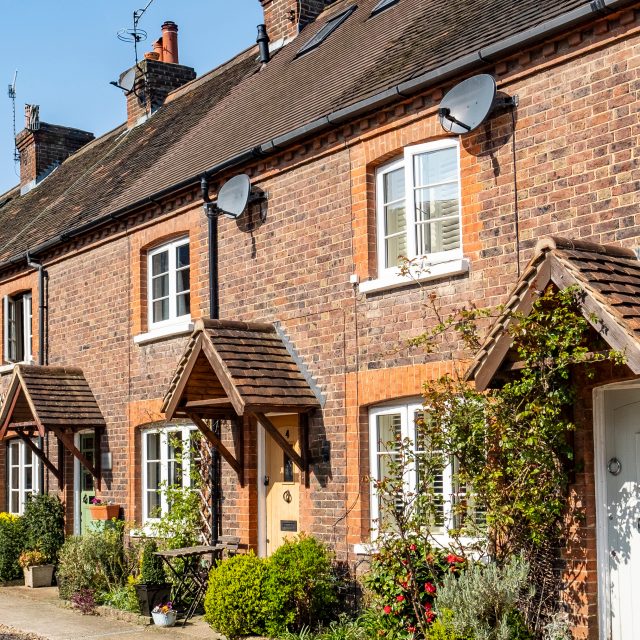Land Business Update | Week Commencing 9 June 2025
Farming & food
Effect on Defra budget less than feared from Spending Review (England) 
Reaction to the allocation for farming as been largely positive – it was less bad than was feared and there is feeling that the department did a good job to secure its funding. Support for sustainable farming and nature recovery will continue at similar levels to previous years for the period covered by the Spending Review, which is from 2025/26 to 2028/29. However, it is hard to decipher the detail precisely:
The government says it will invest more than £2.7bn per year in sustainable farming and nature recovery from 2026/27 to 2028/29. Of this, £2.3bn will be through the Farming and Countryside Programme (FCP), which includes the Environmental Land Management schemes. This appears to be a cut of around 4% based on the National Audit Office’s assessment that Defra had committed to spend £2.4bn a year between 2020-21 and 2023-24.
There was no detail on how the £2.3bn FCP budget will be split between schemes but it is clear that Defra wants to maximise the impact of that spending and does not think that ‘old’ SFI does that.
The government also states that farmers will get up to £400m from additional nature schemes. It is not clear yet what they are but they could include the Nature Restoration Fund (see article below).
The 10% real-terms cut to Defra’s administration budget is in line with other departments and we hope, at least in part, will be offset by spending to address historical IT challenges.
The government also stated its aim to introduce a common grants platform and possibly a single grants delivery body to handle grants and payment administration. This makes sense in principle but experience, in both England and Scotland, is that new systems can bring short-term challenges so it will be important that any transition is carefully managed to minimise disruption for farmers.
S&P comment: this gives the sector some medium-term clarity on the level of support available to it and also on the direction of policy. The spending review may have been the main cause of delays in making policy decisions so, now it is done, the sector needs the other ‘policy pieces’, including the farming roadmap, in place.
Nature Restoration Fund could support nature-friendly farming (England) 
The Guardian has reported that ministers expect the new Nature Restoration Fund, created by the Planning and Infrastructure Bill, to provide private investment for nature-friendly farming. Defra did not comment on the story which was published before the Spending Review. These potential changes come in the same week that a review has been launched on Biodiversity Net Gain rules which could ‘simplify’ rules for developments up to 49 houses. It is not yet clear whether this means that smaller developments will not have to comply at all or whether the gain / uplift will be kept the same but the process simplified (which would be more positive).
Opportunity to get funding to look at drought resilience measures on your farm (England) 
The Environment Agency has launched a new round of its funding for reviewing opportunities for groups of farmers to collaborate on improving drought resilience and reducing flood risk. The funding pays all the costs of advice from water specialists and the funding programme is called Local Resource Options. Last year’s round funded advice on 106 farms on a wide variety of subjects, from building rainwater distribution systems for soft fruit growers, using wetlands to recycle wastewater, shared reservoirs, irrigation networks, aquifer recharge, water-sharing agreements and aiding peat restoration. Some case studies are here. Please call your local office if you would like to discuss opportunities and making an application.
Combinable crops supply chain review started (UK) 
The government is opening a consultation to give farmers and stakeholders the chance to share their experiences of the supply chain. It will follow a similar format to the dairy consultation which lead to the Fair Dealing (Milk) Regulations, which came into effect last year. It is part of the government’s New Deal for Farmers programme.
Changes to 2026 greening rules in Scotland 
The Scottish Government has published details of what farmers have to do to receive an Enhanced Greening payment, which is a supplementary part worth about 30% of the Basic Payment Scheme (BPS). It is intended to reward climate and environment friendly practices.
The main change is the removal of some exemptions. Previously, arable growers that had 75% or more of their claimed area in grassland would have been exempt from Ecological Focus Area (EFA) requirements – that has been taken away so now regardless of how much grassland you have, you will be required to enter into one of the EFA options if you grow 15ha or more of an arable crop(s).
Some of the requirements within the individual EFA options have also been amended:
- The minimum width for the field margin option has increased to 3m from 1m and the margin must have a diverse grass sward containing pollen bearing plants.
- For catch crops, under sowing is permitted into oilseed rape and maize, not just cereals.
- For the green cover option, the number of species within the mix has been increased and encouragingly the restriction on no-grazing before 31st December has been removed.
- For hedges, the no trimming period (except for road safety) has been extended to 1st March to 31st December. Gaps in the hedge of up to 20m were previously allowed – this has been reduced to 5m.
- Changes to EFA fallow are likely to have the most impact as it is probably the option with the widest uptake. Now, rather than just leaving stubbles as fallow, there must be one of the following: a diverse ground cover crop; a wild birdseed mix; a wildflower mix; or a diverse temporary grassland mix.
If existing temporary grassland is used as EFA fallow, then the grass mix must have at least three flowering species within it.
The requirement to submit an EFA map within the Single Application Form has been removed but an EFA map should be retained in case of inspection.
S&P comment: whilst many may see the changes as an inconvenience at first, there is merit in some of the changes. For example, utilisation of cover crops within fallow stubbles will improve soil structure and can fix nitrogen for the next crop. If you would like to discuss the changes and how to apply them, please contact Stephen Whiteford in our farming team.
Total Income From Farming (TIFF) in the UK increases by 26% in 2024 (UK) 
TIFF, which is an official measure of the total profit from all UK farming businesses on a calendar year basis. increased substantially in 2024 compared with 2023. The main points from the data are:
TIFF increased to £7.7bn, up £1.6bn compared with 2023.
The main reason for the change is a £1.2bn reduction in the cost of inputs, which is mainly from lower fertiliser prices.
The value of farm outputs rose £0.4bn, entirely due to a higher value of livestock outputs (+£1.1bn).
It was a much tougher year for crop production, with the value of output falling by £0.6bn. A major contributor to this is arable incomes falling by £1.2bn, due to a 20% drop in wheat output due to wet conditions, which scientists have linked to a changing climate, and lower crop prices.
The Energy and Climate Intelligence Unit (ECIU) has warned that extreme weather events will push more of farming’s finances to the brink.
Natural capital & environment
Record amount of peatland restored in Scotland in 2024 
Just under 15,000 hectares of peatland was restored in 2024/25, a record amount for one year. A total of 90,000 hectares has now been restored since 1990, so getting close to the target of 110,000 hectares by 2026. The acceleration will need to continue if the 250,000 hectares target by 2030 is to be reached.
Rural economy & property
Change to a planning restriction should make it easier to install heat pumps (England) 
The restriction that heat pumps could not be installed within one metre of a neighbour’s property has been removed, although the pumps will still have to be below a certain volume level. There are also changes on the size and number of heat pumps households can install. The changes are part of the government’s Warm Homes Plan to lower household bills and cut emissions. Nesta also report that the government could consult on moving levies from electricity and putting them onto gas or use general taxation, in order to reduce the relative cost of electricity and support the national move towards electrification.
One of the costs of dumping net zero – over £1bn extra energy costs for tax payers (UK) 
Linked to the Warm Homes Plan, this interesting analysis by the Energy and Climate Intelligence Unit (ECIU) throws some light on the effect of scrapping net zero policies, which is what some political parties are proposing. The analysis estimates the cost to taxpayers – and mainly the poorest ones, living in the least energy efficient houses – of scaling back spending on upgrading insulation in houses under the Warm Homes Plan. If spending is cut so that only 300,000 houses are improved instead of the 5m homes’ manifesto commitment, which was a rumour of what may happen at the spending review, the 4.7 million households may miss out on upgrades that would have saved them an average of around £300 per year. Multiplied up, and assuming energy prices remain at current levels, this is a potential saving of £1.4 billion a year in lower energy bills that taxpayers will have to pay. NB The Financial Times has reported that the funding for the Warm Homes Plan will not be reduced and will remain at £6.6bn over the term of this parliament.
Only 39,170 homes were given planning permission in Q1 2025 (England) 
The number of homes, based on figures from the Home Builders Federation, are 32% lower than in the same period of last year and the lowest number for 13 years. The HBF called the figures disastrous and said that there was no government support scheme for first time buyers for the first time in decades (although some commentators have warned against this as evidence on previous schemes is that they helped buyers to buy bigger, boosted house builders’ profits and left some buyers trapped in unsellable homes). The annual rolling average number of approvals is 225,000, the lowest annual figure since 2012 and below what is needed to achieve the government’s target of 1.5m homes by the end of the parliament. The government is hoping to boost house building through its planning system reforms. The British Property Federation said significant delays at the Building Safety Regulator due to lack of staff were causing blockages.
The way Ofgem prioritises projects for grid connection is changing (UK) 
Projects that are ‘aligned’ with the country’s strategy for economic growth or are ‘industries of the future’, including data centres and renewable energy, will be prioritised. To date, some projects have had waits of over 10 years to get a grid connection. The proposals have been produced by the National Energy System Operator (NESO) in partnership with the energy industry.






